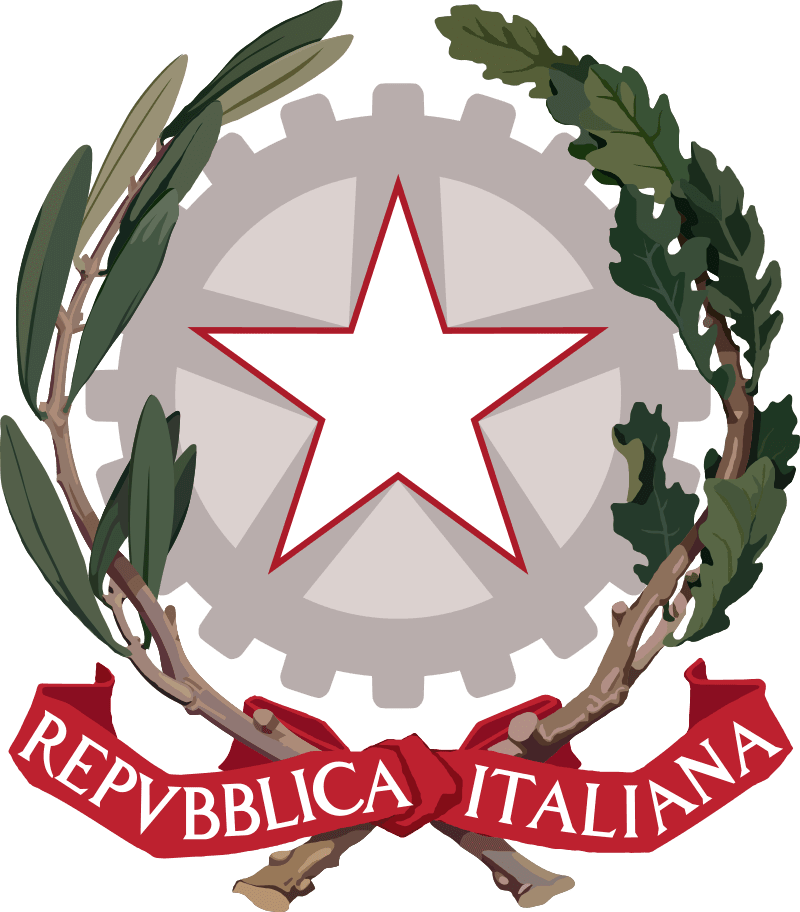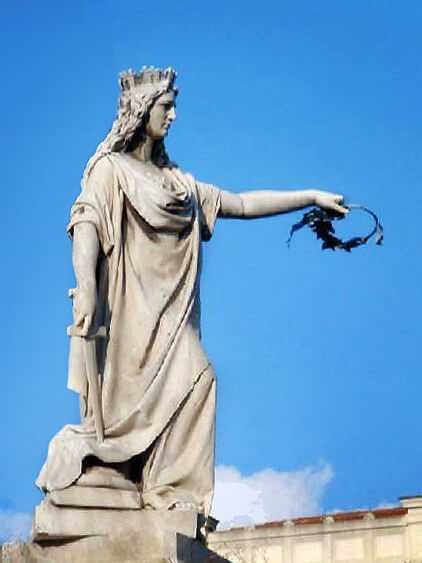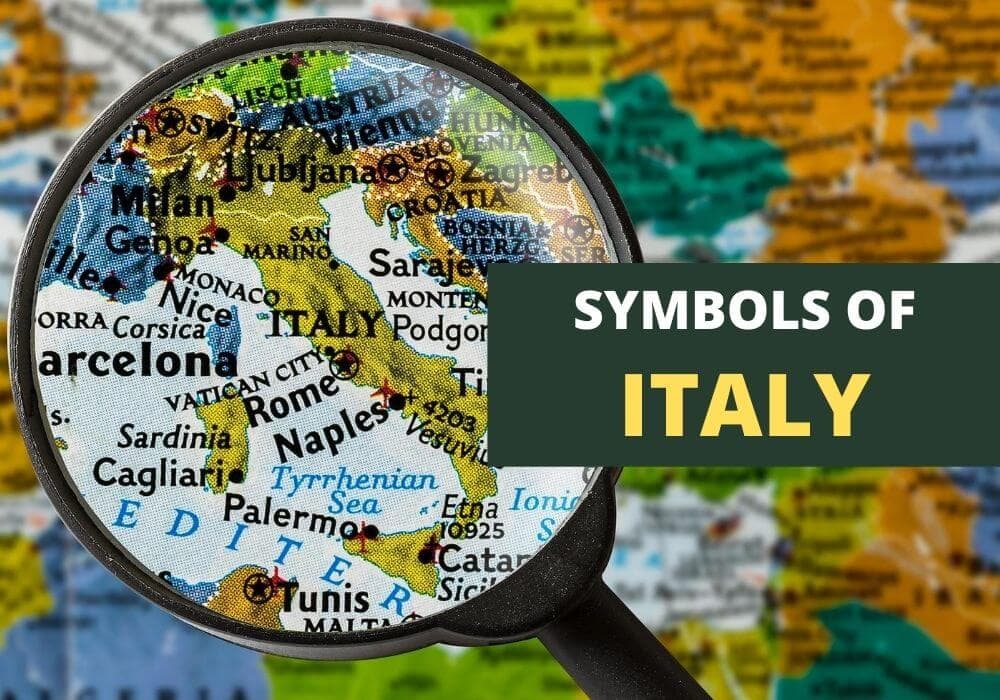
Table of Contents
Italy, with its long history and rich culture, has produced many symbols that continue to influence modern society. While some of these are official or national symbols, others were derived from Greek mythology. These are used in official contexts, artwork, jewelry, and logos, as a representation of Italian heritage. In this article, we take a look at some of the most popular Italian symbols, the history behind them and what makes them important.
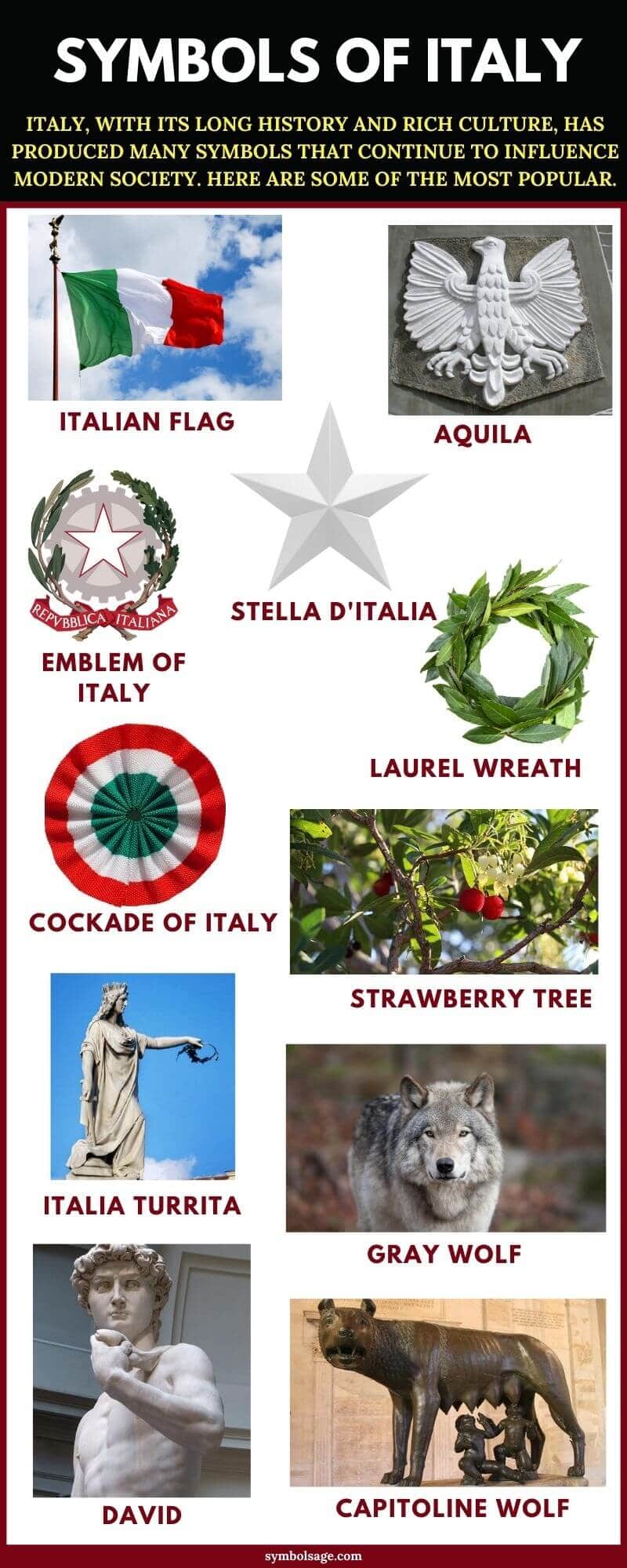
National Symbols of Italy
- National Day: Festa Della Repubblica on the 2nd of June, commemorating the start of the republic and the end of the monarchy
- National Currency: The lira which has been in use since 1861
- National Colors: Green, white and red
- National Tree: Olive and oak trees
- National Flower: Lily
- National Animal: Wolf (unofficial)
- National Bird: Sparrow
- National Dish: Ragu Alla Bolognese, or simply – Bolognese
- National Sweet: Tiramisu
The Flag of Italy
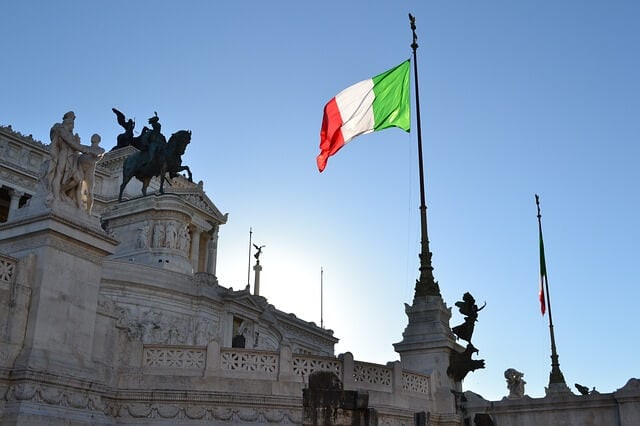
The Italian flag was inspired by the French flag, from which its colors were derived. Instead of the blue color in the French flag, however, the green color of Milan’s Civic Guard was used. Since 1797, the design of the Italian flag has been altered several times. In 1946, the plain tricolor flag that we know today was approved as the national flag of the Italian Republic.
The flag consists of three equal-sized bands in three main colors: white, green and red. The colors have various interpretations as stated below:
- Green: hills and plains of the country
- Red: bloodshed of wars during the time of Unification and Independence
- White: the snow-capped mountains
The second interpretation of these colors is from a more religious point of view and claims that the three colors stand for three theological virtues:
- Green represents hope
- Red represents charity
- White represents faith
Stella d’Italia

A white, five-pointed star, the Stella d’Italia is one of the oldest national symbols of Italy, dating back to Ancient Greece. This star is said to metaphorically represent the shining destiny of the Italian peninsula and has represented it for several centuries.
Earlier on in the 16th century, the star began to be associated with the Italia turrita, the personification of the country as a nation. In the mid-twentieth century, it was adopted as an important component of the emblem of Italy.
The Emblem of Italy
The Italian emblem consists of the white five-pointed star, or Stella d’Italia, placed over a cogwheel with five spokes. On its left side is an olive branch and on the right, an oak branch. The two branches are bound together with a red ribbon with the words ‘REPVBBLICA ITALIANA’ (Italian Republic) inscribed on it. This emblem is widely used by the government of Italy.
The star is associated with the personification of the country and the cogwheel is symbolic of work, representing the very first article of the Italian Constitutional Charter which states Italy is a Democratic Republic that’s founded on work.’
The oak branch symbolizes the dignity and strength of the Italian people whereas the olive branch represents the nation’s wish for peace, embracing both the international brotherhood and the internal concord.
The Cockade of Italy
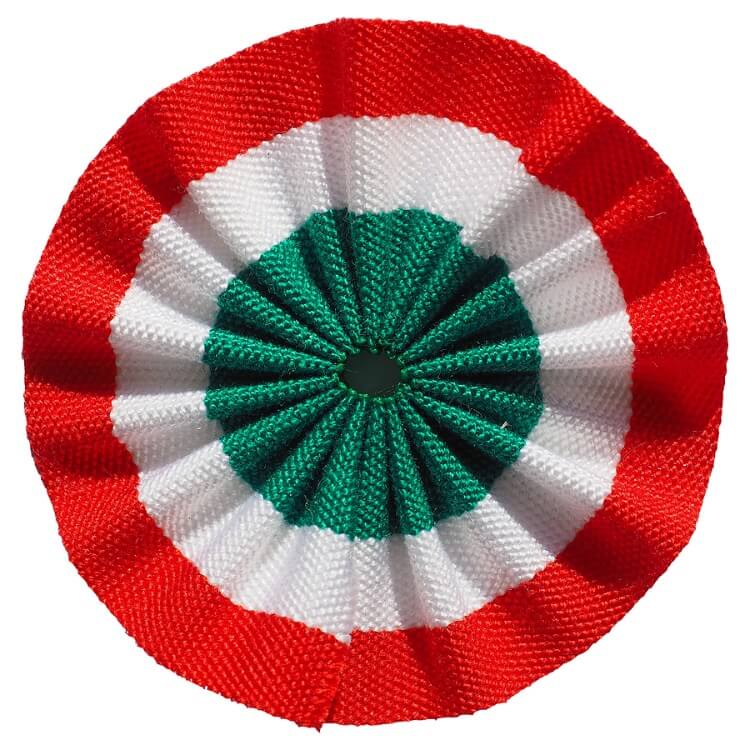
The Cockade of Italy is one of the country’s most important national ornaments, featuring the three colors of the flag. It’s made by using a ‘plissage’ (or pleating) technique to create an ornament with a crinkled effect, with the green in the center, the white on the outside and the red lining the edge.
The tricolor cockade is a symbol of the Italian Air Force and is often seen sewn onto meshes of sports teams holding Italian cups. It was also used in 1848 on the uniforms of certain members of the Royal Sardinian Army (later called the Royal Italian Army) and in January 1948 it became a national ornament with the birth of the Democratic Republic of Italy.
Strawberry Tree

In the 19th century, the Strawberry Tree was considered one of Italy’s national symbols. This was during the time of Risorgimento, the movement for Italian unification, which took place in 1861 and resulted in the establishment of the Italian Kingdom.
The autumn colors of the strawberry tree (green leaves, red berries and white flowers) are found in the Italian flag which is why it’s referred to as the ‘national tree of Italy’.
Giovanni Pascoli, the Italian poet, wrote a poem dedicated to the strawberry tree. In it he refers to the story of the Prince Pallas who was killed by King Turnus. According to the story which can be found in the Latin poem Aeneid, Pallas posed on the branches of a strawberry tree. Later on, he was considered the first ‘national martyr in Italy’.
Italia turrita
The Italia turrita, a statue of a young woman holding what seems to be a wreath of wheat with a mural crown around her head, is famous as the personification of both the Italian nation and its people. The crown is symbolic of the country’s urban history and the wheat symbolizes fertility while also representing the agricultural economy of the country.
The statue is famous as one of Italy’s national symbols and has been depicted widely in art, literature and politics over the centuries. It has also been depicted in several national contexts such as on coins, monuments, passports and since recently, on the national identity card.
Grey Wolf (Canis Lupus Italicus)
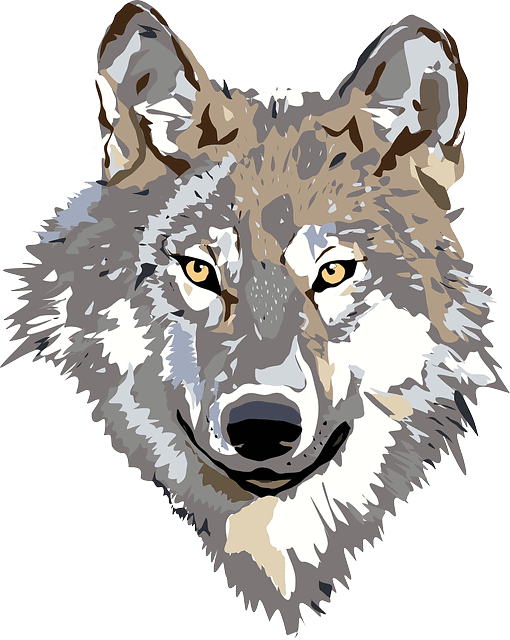
Although there is debate about the national animal of Italy, the unofficial symbol is considered to be the grey wolf (also known as the Apennine Wolf). These animals live in the Italian Mountains of Apennine and are dominant wild animals and the only large predators of the area.
According to legend, a female gray wolf suckled Romulus and Remus, who eventually went on to found Rome. As such, the gray wolf is seen as an important element in the founding myths Italy. Today, the number of gray wolves continue to dwindle making them an endangered species.
Capitoline Wolf
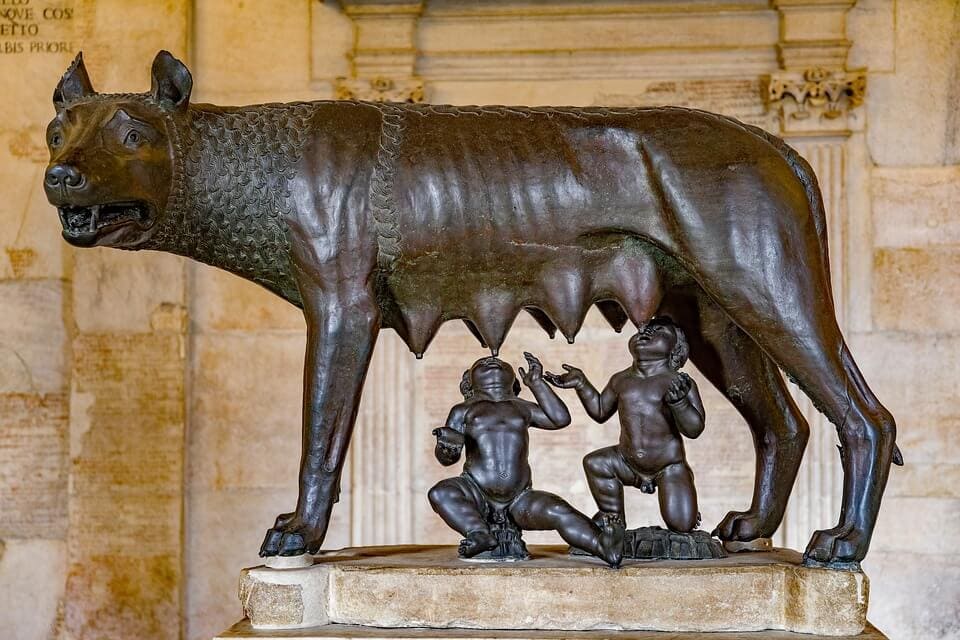
The Capitoline Wolf is a bronze sculpture of a she-wolf with the human twins Remus and Romulus suckling, representing the founding of Rome.
According to the legend, the suckling twins were rescued by the she-wolf and nurtured. Romulus would eventually go on to kill his brother Remus and found the city of Rome, which bears his name.
The famous image of the Capitoline Wolf is often found in sculptures, signs, logos, flags and building sculptures and is a highly respected icon in Italy.
Aquila
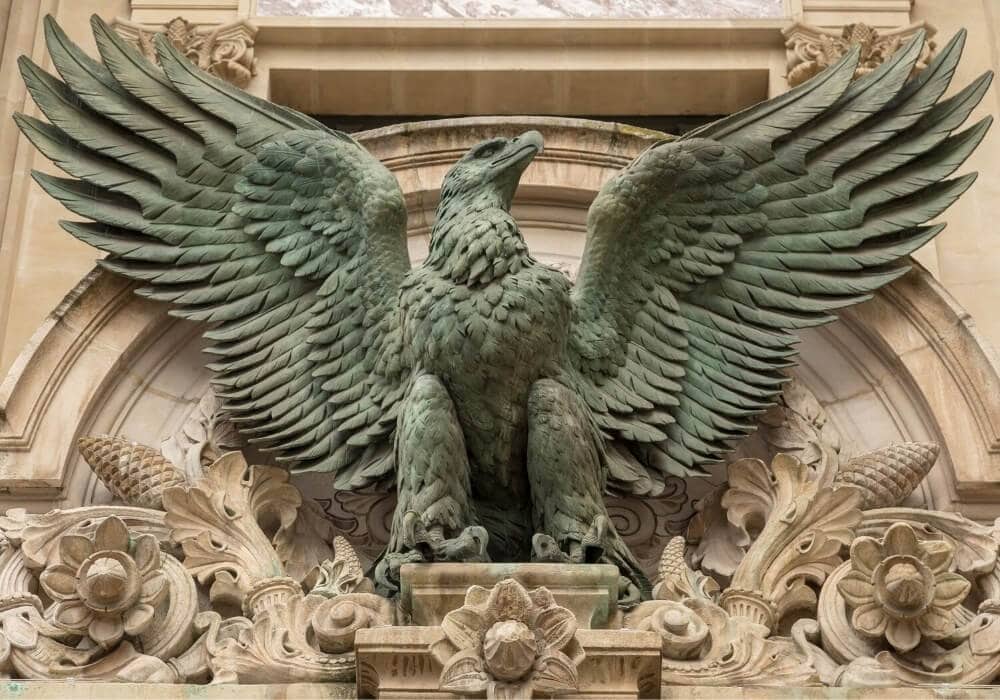
Aquila, meaning ‘eagle’ in Latin, was an incredibly prominent symbol in ancient Rome. It was the standard of the Roman legion, carried by legionaries called ‘aquilifers’.
The Aquila was of great importance to soldiers and a symbol of their legion. They went to great lengths to protect the eagle standard and recover it if it ever got lost in battle, which was considered the ultimate humiliation.
Even today, certain European countries and cultures have eagles similar to Aquila on their flags, some of them being descendants of the mighty Roman Empire.
Globus (The Globe)
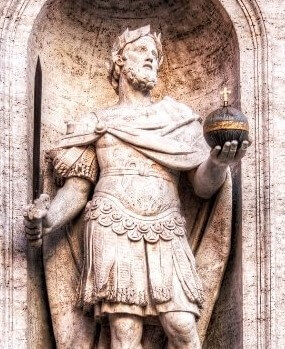
The Globus is a ubiquitous symbol in Rome, featured on statues, and coins throughout the Roman Empire. Many statues feature the Globus depicted in the hand of the emperor or under his foot, symbolizing dominion over conquered Roman territory. The Globus also represents the spherical Earth and the universe. Roman deities, especially Jupiter, are often portrayed either holding a globe or stepping over it, both of which represent the ultimate power of the gods over the land.
With the Christianization of Rome, the symbol of the Globus was adapted to feature a cross placed upon it. This became known as the Globus Cruciger and symbolized the spread of Christianity over the entire world.
Michelangelo’s David
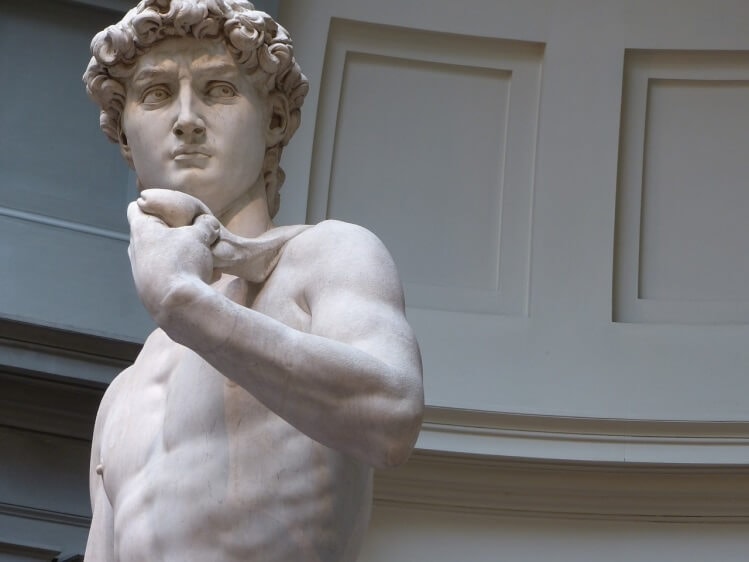
The marble sculpture of David, known as the masterpiece of the Renaissance, was created by the Italian artist Michelangelo somewhere between 1501 and 1504. The sculpture is famed for its depiction of a tense David, preparing for battle with the giant Goliath.
The statue of David is now one of the most recognized Renaissance sculptures in the world and is seen most commonly as a symbol of youthful beauty and strength. It’s located in the Academia Gallery in Florence, Italy.
Laurel Wreath
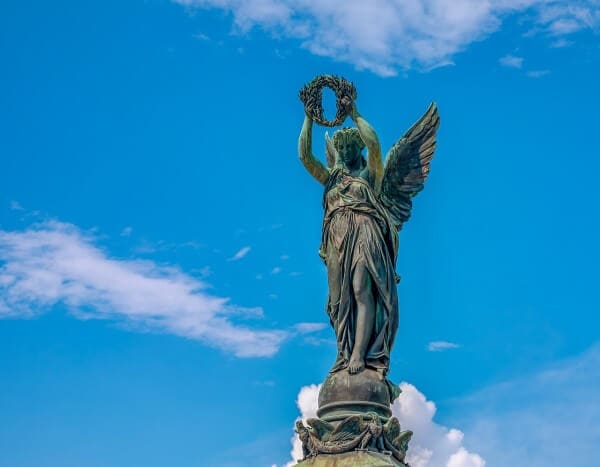
The Laurel Wreath is a popular Italian symbol that originated in Greece. Apollo, the Greek God of the Sun, is often depicted wearing a laurel wreath on his head. Also, wreaths were awarded to victors in athletic competitions like the ancient Olympics.
In Rome, laurel wreaths were symbolic of martial victory, used to crown a commander during his triumph and success. The ancient wreaths were often depicted in a horseshoe shape whereas the modern ones are complete rings.
Sometimes, laurel wreaths are used in heraldry as a shield or a charge. In the Boy Scouts of America, they’re called ‘wreaths of service’ and represent one’s commitment to service.
Roman Toga
A distinctive piece of clothing of ancient Rome, Roman togas were worn wrapped around one’s body and draped over one’s shoulders as a military cloak. It consisted of a four-cornered piece of cloth, draped over one’s armor and fashioned just above the shoulder with a clasp, which was a symbol of war. The toga itself, however, was a symbol of peace.
The color of the toga depended on the occasion. Dark colored togas were worn for a funeral whereas purple togas were worn by Emperors and Victorious generals. Over time, the togas became more embellished and different colors were worn according to preference.
Wrapping Up…
Italian symbols continue to be used widely and still have a great impact on popular culture. To learn more about other countries, check out our related articles.




